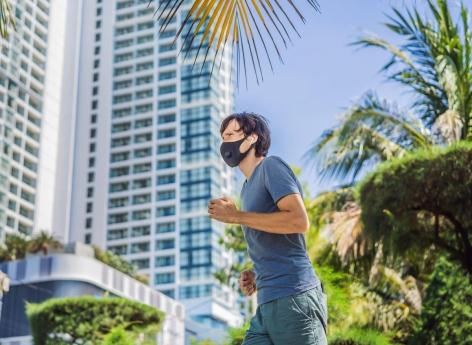Why Doctor – From what fine particle threshold should we worry about our health?
Matthieu Lecuyer – Today, all types of fine particles appear dangerous to health. We talk a lot about PM 2.5, which is the one we measure best. The rest is difficult to quantify because we don’t necessarily have the devices to calculate the intensity of particles on a massive scale in big cities. For example, there are nanoparticles, the most harmful, which are so fine that they enter the lungs or the bloodstream and can cause irreversible damage. We must avoid as much as possible to let them enter the body. The problem is that we are not sufficiently equipped with measuring devices to know their exact presence.
More than one in two children in large cities suffers, or will suffer later in life, from breathing problems. We are just starting to find the cause and most of the time, it appears that it is linked to pollution. Many people wonder why they have a lot of phlegm, a burning throat or headaches, but all of this is often the result of fine particles. These go as far as causing cardiac arrests, which are today the leading cause of death linked to pollution.
– Why does the health risk increase with the practice of physical activity?
When we are in full effort, we breathe up to 15 times more oxygen than when we are static, on the terrace for example. The body is in constant need of oxygen, so the pulmonary alveoli are more receptive to breathing in air for the body. This is when the danger increases, because fine particles enter the lungs even more easily. We are therefore 15 times more likely to have lesions following an effort in a polluted environment. Playing sport in the city is now more dangerous for your health than not doing so.
– Are there some activities that are more dangerous than others?
All activities require cardio, so whether running or cycling, practitioners face the same danger. Today, people are encouraged to cycle in large cities, but cyclists are exposed to extreme levels of pollution from traffic.
For top athletes, the impact of pollution on their health is enormous. The more you are trained and your body is challenged, the greater the effects of pollution will be. An athlete must pay attention to what he eats, what he drinks but also what he breathes. In a while, I am sure that we will see them running with specific masks to fuel their bodies with pure energy if they want to continue training in the city, otherwise they will have to go elsewhere. The big stadiums are now located next to the gates of the ring road in Paris and we see young people training there every day. There is a real awareness to be had. Air quality is ten times more dead than Covid-19 today.
– How to limit the risk if you are in town?
We can first advise people to learn about air quality and adapt their activity according to pollution peaks. Mobile applications exist and take into account various parameters such as weather and hydrometry to calculate and anticipate future peaks. It is also necessary to stay away from polluted sites as much as possible. Of heat maps are available online to find out where they are. You should avoid playing sports near airports, for example, the air quality is very bad. Everyone must also take responsibility and consume less. We are all responsible for air pollution. We must educate and everyone reduce their overall consumption to ensure that the air quality is the best for everyone.
Finally, we are developing a mask that optimizes performance in the face of pollution. It filters very fine particles (up to 40 nanometers), while allowing air to enter very easily. There is very little breathing resistance because the effort requires little resistance and comfort. It is a global innovation.
– Is practicing indoor sport in a polluted city dangerous?
It depends on several things. It is very important to ventilate, but if you are near a road axis, it brings in fine particles. But the risk is lower than outdoors since the organic compounds indoors are less fine and less harmful. If you play sports indoors and after training you have a scratchy throat or a little bitter taste, it means that the air is not good. The hindsight today is difficult to have, because very few rooms have an air quality tracking system. Schools are starting to use air purifiers that capture the quality of the ambient air. The important thing is always to ventilate as much as possible.
<!–
Ce sujet vous intéresse ? Venez en discuter sur notre forum !
–
–
–
–>
–


